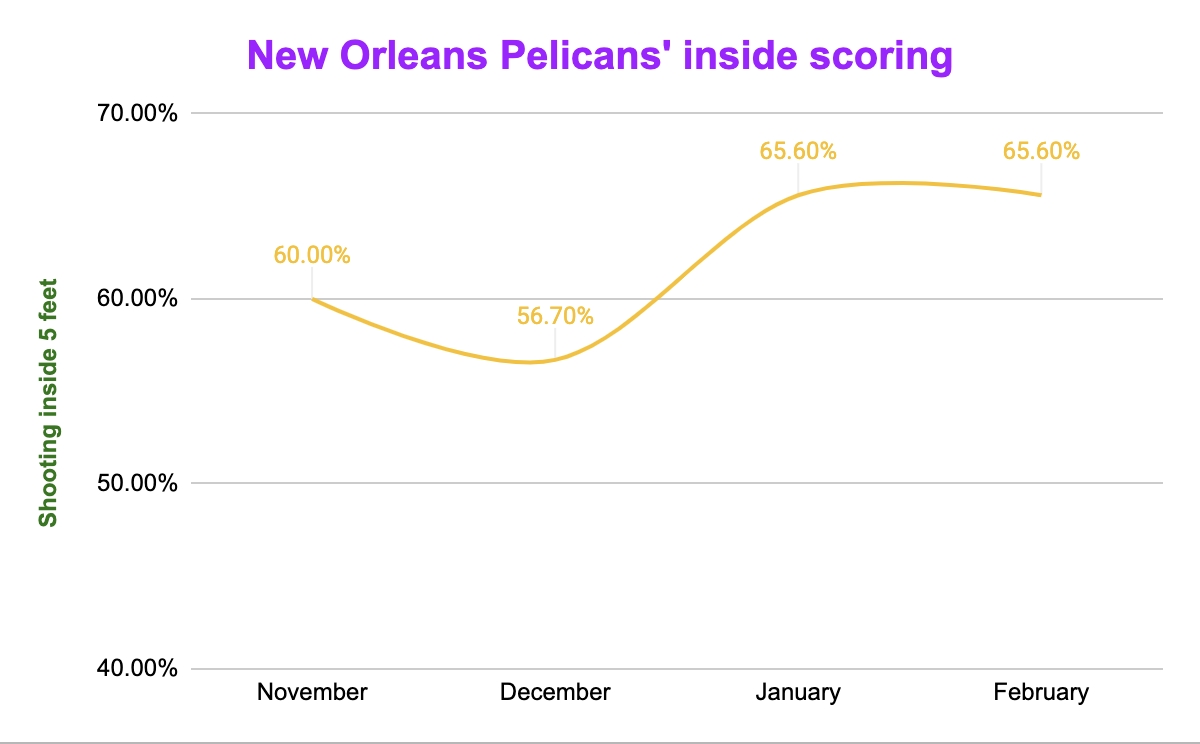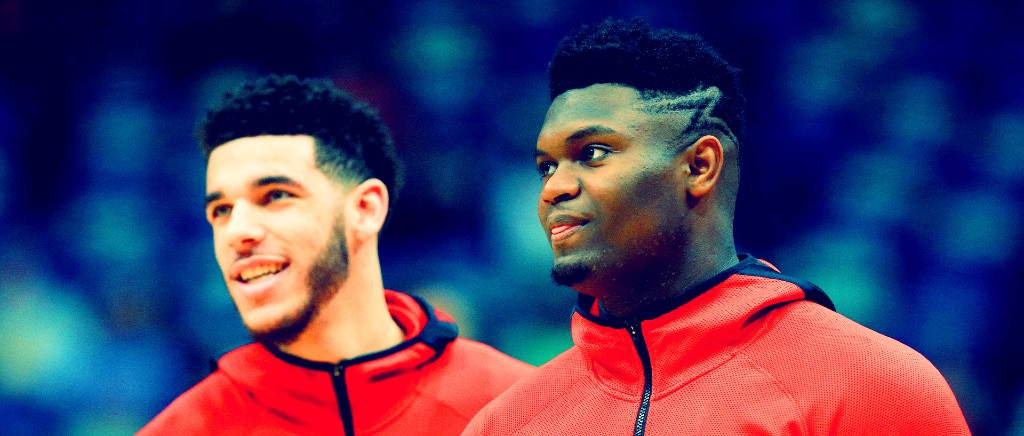As the New Orleans Pelicans tripped their way to a 6-22 start this season, multiple perceived issues were identified. Some believed coach Alvin Gentry wasn’t getting his team ready to play, couldn’t manage the rotation, or was building a system that wouldn’t work. Veteran stalwart Jrue Holiday got off on the wrong foot. What was clearly missing, yet somehow overlooked, was not just the entertainment factor provided by rookie Zion Williamson, who sat the first three months of the season recovering from a meniscus tear, but how perfectly Williamson plugged an obvious hole for New Orleans.
Gentry’s quick-hitting system is designed so that his players take the first best shot. As Michael Pina noted at SB Nation, the Pelicans’ average length of possession is the fastest in the past 20 years. Despite scoring 120 or more points in their first 22 games, New Orleans without Williamson was missing an interior finisher who could clean up misses and provide a release valve when shooters were run off the line.
The Pelicans were a below-average inside scoring team before January, when Williamson debuted and Derrick Favors returned to the lineup full-time. Since then, they’ve been great.

It’s no coincidence that Lonzo Ball, whom the Pelicans acquired as part of the Anthony Davis trade last June, saw his individual play boosted by the return of Williamson as well. Ball shot a season-high 42.2 percent from the field and 38.2 percent from three in February and is scorching so far in March. The story goes that Ball finally got instructed by shot doctor and Pelicans assistant Fred Vinson to move the release of his shot fully to the right side of his body, completing an overhaul of his jumper, but it’s likely the space afforded by Williamson’s presence inside has helped as well.
Aside from the scoring each has brought to the table since the calendar flipped to 2020, their playmaking symbiosis is something to behold, especially in the open court.
HAIL MARY TO ZION pic.twitter.com/JhD7QEEuwH
— New Orleans Pelicans (@PelicansNBA) March 8, 2020
Back at UCLA, Ball’s best traits were always his preternatural ability to push the ball in transition and keep everyone involved offensively. Juggling the process of remaking his shot, adjusting to a new team, and sharing ball-handling duties with Holiday, those skills subsided in his first months in New Orleans. The return of Williamson, however, gave Ball the fast break partner he needed.
Williamson has never seen anything like it. Back at Duke, the big man had to create a lot for himself, as the Blue Devils’ regressive offense and lack of creativity limited how Williamson could play off his teammates. Now, Ball is surprising even Williamson by how easily he can put Williamson in position to score.
These two are gonna be special in NOLA
(via @BenGolliver)pic.twitter.com/trWz4LMDVY
— Bleacher Report NBA (@BR_NBA) March 10, 2020
These guys are clearly having fun. It’s not just in transition where they’ve helped one another. Ball is a master at entry passes, a lost art in today’s perimeter-oriented NBA. Except with Williamson, those entry passes are typically just lobs. There’s no need to loft it into the post when the big fella can go get it for a slam.
As Ball’s shot has improved, defenses are more frequently going over screens to try to force him to drive and give up the ball. The Pelicans can easily parry this strategy by using Williamson as the screener. In the clip below, Derrick Jones Jr., who is listed as 75 pounds lighter than Williamson, drops into the paint to try to corral the Williamson-Ball pick and roll. As Ball gets pressured behind the arc, he drops it off delicately to Williamson, who rams into Jones for an easy lay-in.
In the next play, Williamson works a dribble hand-off with Ball, and as Seth Curry goes under the pick, Ball pulls up for three.
The comparison that always goes underused with Williamson is Blake Griffin, and these sets show what they have in common. Griffin became the master of passing out of the short roll while he played with the Lob City Clippers, taking passes from Chris Paul and working the high-low game with DeAndre Jordan. The same potential exists with Williamson, especially because of the unpredictability of Ball’s (and, to his credit, Holiday’s) game. Add in Brandon Ingram as an all-around scoring threat, and the Pelicans are scary. It’s not by accident that they’re tenth in offense since Williamson’s return on Jan. 22.
However, the Pelicans dug themselves such a hole with that miserable start that their impressive recent play hasn’t been enough to put them in playoff position. They are 3.5 games behind Memphis for the eighth seed in the West right now, and they will need these two young stars to keep up their strong play if they’re going to have a chance at the postseason. However, even if they miss the playoffs this year, the future seems very bright in New Orleans as their young core has found an electrifying chemistry together.







